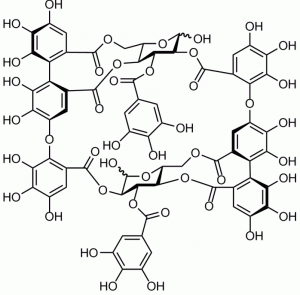Tannins are historically considered an ill-defined mixture of complex polyphenols, and to change this misleading assumption will take some time from the tannin chemists

Oenothein B
Tannin chemistry forms the heart of our current research. We want to understand what types of tannin molecules are produced by the various plant species, by which biosynthetic pathways they are produced, what types of biological activities they have and how changes in tannin structures affect their bioactivity.
Our research benefits the basic knowledge of tannin chemistry, but we also help to understand (1) what types of tannins are important in plants' defence against insect herbivores, (2) by which mechanisms the anti-herbivore activity is best triggered, (3) how different anti-herbivore mechanisms might be important against different types of herbivores (e.g. insects vs. mammals), (4) what are the most active tannin types by each of the anti-herbivore mechanism, and (5) how tannins can be even beneficial for e.g. ruminants such as cows, sheep and goats. All this simultaneously benefits aspects related to human health as our analysis methods are able to reveal and quantify such tannin fingerprints in tannin-containing products that were not possible to measure until our recent method developments with UPLC-DAD-MS/MS.
Our flag publications in this area of research clearly are the two review papers from 2011:
